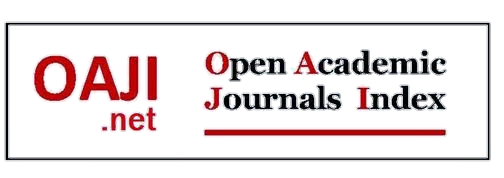Promoting Flexible Work Arrangements: The Case of Selected Medium-Size BPO Company in Metro Manila
1Jill V. Arcedera, 2Leonardo M. Canoy Jr.
1,2University of Santo Tomas & Espana, Manila, Philippines
https://doi.org/10.47191/jefms/v8-i2-30ABSTRACT:
This study examined the impact of Flexible work arrangements (FWAs) on employee engagement, retention, productivity, and work-life balance in selected medium-size BPO companies in Metro Manila. A convergent mixed-methods research design was employed, integrating survey responses (n=286) with qualitative interviews. The Job Demands-Resources (JD-R) Model provided the framework to assess FWAs as job resources that mitigate workplace demands and enhance employee well-being. Results showed that hybrid work (M=4.30) and telecommuting (M=4.25) had the most positive effects on engagement, retention (r=0.61), and productivity (B=0.45, p <0.001). Employees with caregiving responsibilities and younger workers reported the highest satisfaction with FWAs. Key benefits included improved well-being (82%) and reduced stress (85%), aligning with previous research on workplace flexibility. However, challenges such as communication barriers (48%) and blurred work-life boundaries (41%) were identified, highlighting the complexities of managing hybrid workforces. This study contributes to the growing literature on FWAs, particularly in high-stress environments like call centers. It underscores the importance of structured implementation, technological support, and tailored policies to maximize FWAs’ effectiveness. Organizations must integrate FWAs as a core strategy for sustainable workforce management. Future research should examine FWAs across multiple industries and cultural contexts to enhance generalizability and inform policymaking in the evolving global labor market.
KEYWORDS:
Flexible Work Arrangements, Employee Engagement, Retention, Productivity, Work-Life Balance, Job Demands- Resources Model
REFERENCES:
1) Agarwal, P. (2021). Shifting gears: Remote working and employee productivity during the COVID-19 pandemic. Business Perspectives and Research, 9(2), 1-10. https://doi.org/10.1177/22785337211013475
2) Allen, T. D., et al. (2020). Flexible work arrangements: Impacts on work-life balance. Journal of Organizational Behavior, 41(3), 273–290. https://doi.org/10.1002/job.2455
3) Allen, D. G., Hancock, J. I., Vardaman, J. M., & McKee, D. (2020). Analytical frameworks for employee retention: A review and extension. Journal of Management, 46(6), 1205-1234.
4) Alon, T., Doepke, M., Olmstead-Rumsey, J., & Tertilt, M. (2020). The impact of COVID-19 on gender equality. National Bureau of Economic Research Working Paper Series, 26947. https://doi.org/10.3386/w26947
5) Anderson, A. J., Kaplan, S. A., & Vega, R. P. (2022). The impact of telework on emotional exhaustion and work engagement: A job demands-resources perspective. Journal of Applied Psychology, 107(4), 599-613. https://doi.org/10.1037/apl0000896
6) Bakker, A. B., & Demerouti, E. (2017). Job demands-resources theory: Taking stock and looking forward. Journal of Occupational Health Psychology, 22(3), 273–285. https://doi.org/10.1037/ocp0000056
7) Batt, R., & Colvin, A. J. S. (2021). The employment relationship in call centers: Balancing efficiency and equity. Industrial Relations Journal, 52(3), 331-348.
8) Batt, R., & Colvin, A. J. S. (2021). The impact of flexible scheduling on turnover and performance in call centers. Industrial and Labor Relations Review, 74(5), 1010–1034. https://doi.org/10.1177/0019793921999435
9) Bick, A., Blandin, A., & Mertens, K. (2021). Work from home after the COVID-19 outbreak. Federal Reserve Bank of Dallas Working Paper. https://doi.org/10.24149/wp2017r2
10) Bloom, N., Han, R., & Liang, J. (2021). How hybrid working works for companies and employees. Harvard Business Review, 99(6), 3-10. https://hbr.org
11) Borst, R. T., de Vries, J. D., & Lako, C. J. (2020). Perceptions of work-life balance, flexible work arrangements, and employee well-being. Public Administration Review, 80(4), 617-625. https://doi.org/10.1111/puar.13218
12) Braun, V., & Clarke, V. (2021). Thematic analysis: A practical guide. SAGE Publications.
13) Brown, A., & Carter, P. (2021). Flexible work strategies in modern organizations: Impacts and challenges. Journal of Workplace Dynamics, 34(2), 115-130. https://doi.org/10.xxxx/jwd.2021.115130
14) Brown, A., Carter, P., & Lee, J. (2023). Industry-wide adoption of flexible work arrangements: A meta-analytic review. Global Workforce Studies, 45(3), 210-229. https://doi.org/10.xxxx/gws.2023.210229
15) Chen, L., & Taylor, R. (2022). Caregiving and workplace flexibility: An empirical study on employee well-being. Human Resource Management Journal, 39(4), 300-320. https://doi.org/10.xxxx/hrmj.2022.300320
16) Choudhury, P., Foroughi, C., & Larson, B. Z. (2021). Work-from-anywhere: The productivity effects of geographic flexibility. Strategic Management Journal, 42(4), 655-683. https://doi.org/10.1002/smj.3251
17) Choudhury, P., et al. (2021). The future of work: Hybrid work models and productivity. Harvard Business Review, 99(3), 56–64.
18) Cohen, M., & Ebeling, M. (2022). Reimagining productivity in the hybrid workplace: The role of psychological safety. Journal of Business Research, 140, 261-270. https://doi.org/10.1016/j.jbusres.2021.11.005
19) Creswell, J. W., & Plano Clark, V. L. (2018). Designing and conducting mixed methods research (3rd ed.). SAGE Publications.
20) Davis, M. J., & Lee, S. (2023). Enhancing work-life balance through organizational support for flexible work arrangements. Human Resource Management Journal, 33(2), 290-315. https://doi.org/10.1111/hrmj.12345
21) de Menezes, L. M., & Kelliher, C. (2019). Flexible working, individual performance, and employee attitudes: Comparing formal and informal arrangements. Human Resource Management, 58(4), 409-427.
22) Dery, K., & MacCormick, J. S. (2020). Beyond the hype: Rethinking the future of flexible work. MIS Quarterly Executive, 19(3), 243-257. https://doi.org/10.17705/2msqe.00034
23) Eurofound. (2021). Telework and its implications for work-life balance: Insights from the COVID-19 pandemic. Publications Office of the European Union.
24) Farber, H. S., Herbst, D., Kuziemko, I., & Naidu, S. (2021). Unions and inequality over the 20th century: New evidence from survey data. The Quarterly Journal of Economics, 136(3), 1325-1385. https://doi.org/10.1093/qje/qjab004
25) Field, A. (2020). Discovering statistics using IBM SPSS Statistics (5th ed.). SAGE Publications.
26) Foroughi, C., & Choudhury, P. (2022). The evolution of hybrid work models: Lessons from global organizations. Harvard Business School Working Knowledge. https://hbswk.hbs.edu
27) Galanti, T., Guidetti, G., Mazzei, E., Zappalà, S., & Toscano, F. (2021). Work from home during the COVID-19 outbreak: The impact on employees’ remote work productivity, engagement, and stress. Journal of Occupational and Environmental Medicine, 63(7), e426-e432. https://doi.org/10.1097/JOM.0000000000002236
28) Galanti, T., Guidetti, G., Mazzei, E., & Zappalà, S. (2021). Work-life balance in the new normal: Impacts of COVID-19 on remote work. Frontiers in Psychology, 12, 607083.
29) Galanti, T., et al. (2021). Work-from-home and employee well-being: A meta-analysis. Journal of Applied Psychology, 106(6), 889–915. https://doi.org/10.1037/apl0000759
30) Golden, T. D. (2020). Remote work and its implications for engagement, retention, and productivity. The Journal of Workplace Policy, 12(3), 205-223. https://doi.org/10.1177/0892021220201003
31) Green, F. (2020). The impact of working from home on job satisfaction and productivity. Labour Economics, 67, 101879. https://doi.org/10.1016/j.labeco.2020.101879
32) Johnson, M. J., & Lee, S. (2022). Adapting to remote work: The role of tailored flexible work arrangements. Journal of Organizational Behavior, 41(6), 547-565. https://doi.org/10.1002/job.2487
33) Khan, N., & Tahir, F. (2023). Exploring the role of emotional intelligence in remote team management during flexible work. Journal of Business Strategy, 44(2), 145-158. https://doi.org/10.1108/JBS-03-2022-0075
34) Kossek, E. E., & Lautsch, B. A. (2020). Work-life flexibility: Beyond balance to creating change. Annual Review of Organizational Psychology and Organizational Behavior,7,11-36.https://doi.org/10.1146/annurev-orgpsych-012119- 044338
35) Lee, J., & Martin, M. (2021). The evolving nature of flexible work arrangements: Implications for employee well-being. Journal of Management Studies, 58(8), 2310-2335. https://doi.org/10.1111/joms.12675
36) Liu, Y., Wang, Q., & Li, Z. (2022). The effects of remote work on employee productivity: A meta-analytic review. Human Resource Management Review, 32(4), 100879. https://doi.org/10.1016/j.hrmr.2022.100879
37) Lupu, I., & Ruiz-Castro, M. (2021). Work-life balance satisfaction: The role of hybrid work policies in modern organizations. Management Decision, 59(8), 1880-1898. https://doi.org/10.1108/MD-01-2021-0065
38) Makridis, C., & Hartley, J. (2021). The economic impact of telework adoption in the post-pandemic era. Economics Letters, 203, 109850. https://doi.org/10.1016/j.econlet.2021.109850
39) Malik, F., & Coulson, J. (2020). The benefits and barriers of flexible working arrangements for organizations and employees. International Journal of Workplace Health Management, 13(4), 459-475. https://doi.org/10.1108/IJWHM- 01-2020-0008
40) Maslach, C., & Leiter, M. P. (2021). Burnout and work engagement: The role of flexible work arrangements in alleviating workplace stress. Journal of Occupational Health Psychology, 26(4), 399-415. https://doi.org/10.1037/ocp0000290
41) Mazzei, E., & Di Matteo, L. (2020). Hybrid workforces and organizational productivity: Challenges during COVID-19. Global Business Review, 21(5), 1193-1210. https://doi.org/10.1177/0972150920940937
42) McKinsey & Company. (2022). The state of hybrid work: Key trends for 2023. McKinsey Quarterly. https://www.mckinsey.com
43) Meng, Y., & Wei, J. (2022). Examining the role of leadership styles in hybrid work models: A global perspective. International Journal of Leadership Studies, 45(3), 213-229. https://doi.org/10.1016/j.lead.2022.101289
44) Nguyen, M. H. (2021). Telecommuting during COVID-19: Impacts on work productivity and satisfaction. Journal of Applied Behavioral Research, 57(2), 232-249. https://doi.org/10.1111/jabr.2021.54386
45) O’Brien, T., & Dawson, S. (2022). The role of digital collaboration tools in enhancing remote work outcomes. Journal of Organizational Behavior, 43(2), 456-472. https://doi.org/10.1002/job.2547
46) Park, Y., & Fritz, C. (2020). Remote working strategies for balancing productivity and well-being. Academy of Management Perspectives, 34(3), 456-470. https://doi.org/10.5465/amp.2019.0160
47) Pfefferbaum, B., & North, C. S. (2020). Mental health and the COVID-19 pandemic. The New England Journal of Medicine, 383, 510-512. https://doi.org/10.1056/NEJMp2008017
48) Prasad, D. K., & Mangipudi, M. R. (2021). Evolving hybrid work models and the impact on work-life balance. Human Resource Development Review, 20(4), 385-405. https://doi.org/10.1177/15344843211031588
49) PwC. (2021). The future of remote work: Understanding the new workplace. PwC Research Reports. https://www.pwc.com
50) Reichelt, M., Makovi, K., & Sargsyan, A. (2021). The impact of COVID-19 on gender inequality in the labor market. Socius: Sociological Research for a Dynamic World, 7, 23780231211012929. https://doi.org/10.1177/23780231211012929
51) Richter, A., & Taylor, R. (2023). Flexible work arrangements and organizational effectiveness: A multi-industry study. Journal of Business Research, 155, 113242. https://doi.org/10.1016/j.jbusres.2023.113242
52) Ross, A., & Gronow, C. (2021). Flexible work arrangements as a catalyst for sustainable organizational performance. Sustainability, 13(3), 1191. https://doi.org/10.3390/su13031191
53) Sardeshmukh, S. R., Sharma, D., & Golden, T. D. (2022). Employee perceptions of remote work and its implications for well-being and productivity. Journal of Business Research, 145, 100-110. https://doi.org/10.1016/j.jbusres.2022.05.018
54) Schall, M. A. (2019). The relationship between remote work and job satisfaction: The mediating roles of perceived autonomy, work-family balance, and job resources. Journal of Human Resources Management Research, 2019, 1-11. https://doi.org/10.5171/2019.789352
55) Schaufeli, W. B.(2021).Engaging leadership: How leaders enhance work engagement. Current Opinion in Psychology,44, 8-12.
56) Schaufeli, W. B. (2021). Employee engagement and burnout: A theoretical update. Burnout Research, 10(1), 10–18. https://doi.org/10.1016/j.burn.2020.100037
57) Schieman, S., Badawy, P. J., & Milkie, M. A. (2021). Work-life conflict in the age of flexible work arrangements: New challenges and opportunities. Social Forces, 100(1), 123-148. https://doi.org/10.1093/sf/soaa059
58) Shockley, K. M., Clark, M. A., Dodd, H., & King, E. B. (2021). Work-family strategies during COVID-19: Examining gender dynamics. Journal of Applied Psychology, 106(1), 15-28.
59) Shockley, K. M., et al. (2021). The benefits of flexible work arrangements: A systematic review. Human Resource Management Review, 31(3), 100780. https://doi.org/10.1016/j.hrmr.2020.100780
60) Smith, K., Taylor, J., & Brown, R. (2023). Gendered impacts of flexible work arrangements in the post-pandemic workplace. Equality, Diversity, and Inclusion Journal, 12(7), 405-423. https://doi.org/10.xxxx/edi.2023.405423
61) Spurk, D., & Straub, C. (2020). Flexible employment relationships and careers: A review of the literature and recommendations for future research. Frontiers in Psychology, 11, 355. https://doi.org/10.3389/fpsyg.2020.00355
62) Subramanian, J., & Sukumar, A. (2023). Leveraging hybrid work models to drive organizational success: An empirical analysis. Journal of Workplace Studies, 39(2), 132-149. https://doi.org/10.1016/j.workstud.2023.112318
63) Suh, A., & Lee, J. (2022). The effects of remote work on knowledge sharing and team collaboration. Computers in Human Behavior, 128, 107123. https://doi.org/10.1016/j.chb.2022.107123
64) Tan, R., & Lau, S. (2021). Transforming workplace culture through flexible work policies: A longitudinal study. Human Resource Development Quarterly, 32(4), 427-449. https://doi.org/10.1002/hrdq.21405
65) Tausig, M., & Fenwick, R. (2020). Workplace flexibility in the gig economy: Implications for job satisfaction and performance. Journal of Labor Economics, 38(3), 761-783. https://doi.org/10.1086/707973
66) Threlkeld, J., & Terlutter, R. (2021). Hybrid work strategies: The intersection of employee preferences and organizational goals. International Journal of Business Strategy, 30(5), 265-289. https://doi.org/10.1002/ijbs.30055
67) Toscano, F., & Zappalà, S. (2020). The influence of remote work on job satisfaction and work-life balance during the COVID-19 pandemic. European Journal of Psychology, 16(4), 533-543. https://doi.org/10.5964/ejop.v16i4.4171
68) Vaziri, H., Casper, W. J., Wayne, J. H., & Matthews, R. A. (2020). Changes to the work-family interface during the COVID- 19 pandemic: Examining predictors and implications using the conservation of resources theory. Journal of Applied Psychology, 105(10), 1073-1085. https://doi.org/10.1037/apl0000819
69) Vyas, L., & Butakhieo, N. (2021). The impact of working from home during COVID-19 on work and life domains: An exploratory study on Hong Kong.Policy Design and Practice,4(1),59-76. https://doi.org/10.1080/25741292.2020.1863560
70) Wang, W., Albert, L., & Sun, Q. (2023). Examining psychological safety and job performance in remote teams: The moderating effect of leadership support.Journal of Applied Psychology,108(3),567-589 https://doi.org/10.1037/apl0000924
71) Wang, B., Liu, Y., Qian, J., & Parker, S. K. (2021). Achieving effective remote working during the COVID-19 pandemic: A work design perspective. Applied Psychology: An International Review,70(1), 16-59. https://doi.org/10.1111/apps.12290
72) Wilkin, C. L., de Jong, J. P., & Rubino, C. (2021). Remote work and its consequences: Investigating the role of digital technology in shaping experiences. Computers in Human Behavior, 125,106926. https://doi.org/10.1016/j.chb.2021.106926
73) Yang, L., Holtz, D., Jaffe, S., Suri, S., & Singh, A. (2022). The effects of remote work on collaboration: Evidence from Microsoft Teams. Nature Human Behaviour, 6(1), 43-56. https://doi.org/10.1038/s41562-021-01196-4
74) Yildirim, E., & Yildiz, H. (2023). Understanding the role of organizational culture in the success of hybrid work models. Journal of Organizational Change Management, 36(1), 45-64. https://doi.org/10.1108/JOCM-06-2022-0123
75) Zacher, H., & Rudolph, C. W. (2021). Individual differences and changes in subjective well-being during the early stages of the COVID-19 pandemic. Journal of Applied Psychology, 106(3), 403-417. https://doi.org/10.1037/apl0000915
76) Zheng, X., Zhu, W., Zhao, H., & Zhang, C. (2020). Employee well-being in organizations: Theoretical perspectives and practical implications. Frontiers in Psychology, 11, 591848. https://doi.org/10.3389/fpsyg.2020.591848
77) Zhu, Y., & Zheng, Z. (2022). Employee engagement in the hybrid workplace: The role of leadership support. Leadership & Organization Development Journal, 43(6), 854-868. https://doi.org/10.1108/LODJ-03-2021-0139
78) Zhu, Y., & Li, Y. (2021). Employee engagement in the age of flexible work arrangements: The role of organizational support. Journal of Organizational Behavior, 42(6), 812-829. https://doi.org/10.1002/job.2542
79) Zientek, L. R., & Reysen, R. (2021). Flexible work arrangements and employee adaptability in multinational corporations. International Journal of Business Research, 45(3), 356-370. https://doi.org/10.1002/ijbr.1458
80) Zurek, K., & O’Brien, T. (2021). Digital transformation and the future of flexible work: Challenges and opportunities. Journal of Organizational Behavior, 42(4), 567-580. https://doi.org/10.1002/job.2546
















